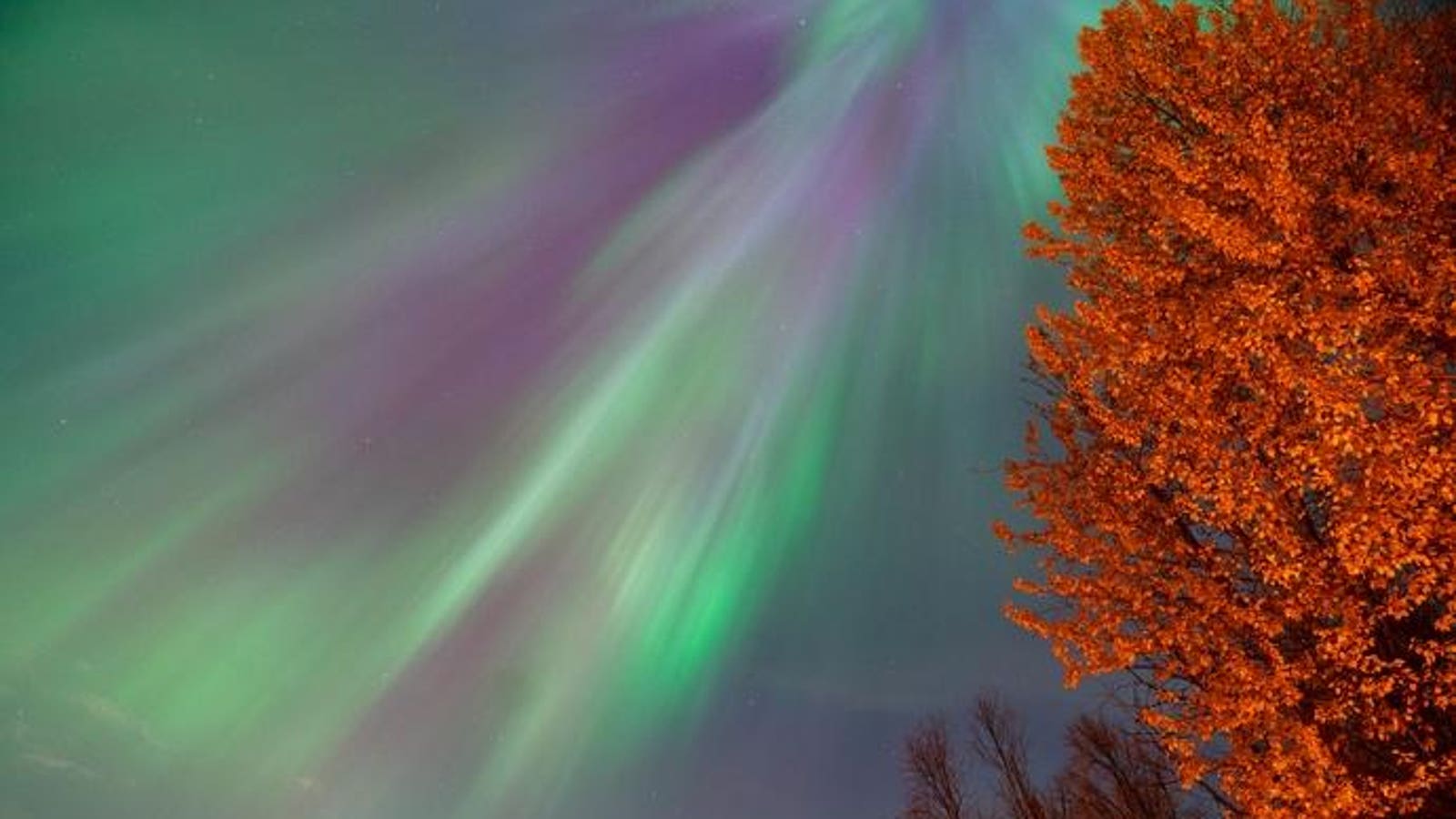Topline
The northern lights could be visible from several states on Tuesday night as the National Oceanic and Atmospheric predicts continued minor to moderate geomagnetic storm conditions, days after the sun produced some of the strongest solar flares in years.
Northern lights observed in Alaska on Oct. 07. (Photo by Hasan Akbas /Anadolu via Getty Images)
Key Facts
The NOAA issued a geomagnetic storm alert Tuesday, noting G3 levels have been observed—indicating a strong geomagnetic storm.
G1 to G2 levels, indicating minor to moderate geomagnetic storm levels, are expected to continue throughout Tuesday and decrease in the coming days.
The geomagnetic activity expected for Tuesday night has a forecasted Kp index between 3 and 4, according to the NOAA forecast, meaning the lights can be “quite pleasing to look at” if viewers are in the right areas.
Some of the strongest solar flares in years have happened in the first days of October, producing bright northern lights: An X9.0 solar flare happened on Oct. 4, the strongest of this solar cycle, days after an X7.1 solar flare happened on Oct. 1.
Where Could The Aurora Borealis Be Seen?
States included in the northern lights’ potential view line include Alaska, Washington, Idaho, Montana, North Dakota, Minnesota, Wisconsin and Michigan, according to the NOAA. The chance for an aurora borealis sighting in most of these states are low, though Alaskans will have the best shot at seeing the lights. The upper edges of Montana, North Dakota and Minnesota also have a slightly better chance of a sighting.
When Are The Northern Lights Visible?
The lights are best seen between about 10 p.m. and 2 a.m. local time, according to the NOAA. The NOAA recommends traveling as far north as possible, finding a high vantage point and avoiding light pollution.
What’s The Best Way To Photograph Northern Lights?
Northern lights can be photographed with a smartphone, and the best bet is to avoid using flash and use night mode, which is available on newer iPhone models.
Key Background
Geomagnetic activity has been exceeding scientists’ predictions during Solar Cycle 25, the current cycle of activity the sun experiences every 11 years. Because of the increased number of solar flares and geomagnetic storms, the northern lights have been frequently visible, and NASA predicts solar activity will peak sometime in 2025.
Further Reading
Solar Cycle 25 is Exceeding Predictions and Showing Why We Need the GDC Mission (NASA)









